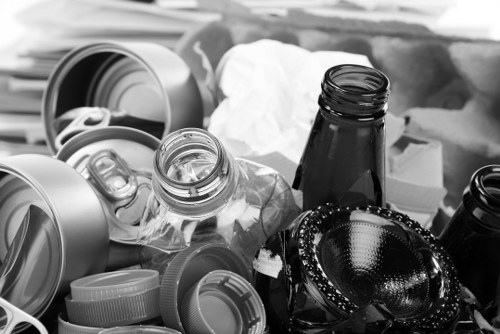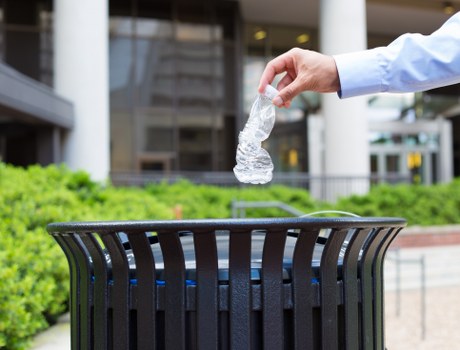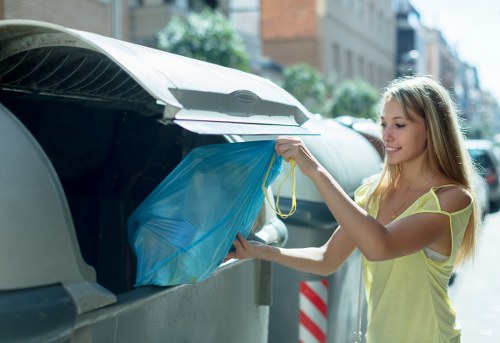Waste Clearance Chinatown: Efficient Solutions for a Cleaner Community

Chinatown is a vibrant hub of culture, commerce, and community life. However, like any densely populated area, managing waste effectively is crucial to maintaining its cleanliness and ensuring the well-being of its residents. Waste clearance in Chinatown involves not only the removal of everyday trash but also the careful handling of larger items and hazardous materials.
Proper waste management is essential for preventing health hazards, reducing environmental impact, and keeping the area aesthetically pleasing. With the increasing population and commercial activities in Chinatown, the demand for reliable waste clearance services has never been higher.
In this article, we will explore the various aspects of waste clearance in Chinatown, including the services available, best practices, and the importance of community involvement. Whether you're a resident, business owner, or visitor, understanding how waste clearance works can help contribute to a cleaner and healthier Chinatown.

Types of Waste Clearance Services
Waste clearance services in Chinatown cater to different needs, ranging from regular trash collection to specialized disposal of bulky and hazardous items.
Regular Trash Collection
Regular trash collection is the backbone of waste management in Chinatown. Scheduled pickups ensure that everyday waste is consistently removed, preventing accumulation and reducing the risk of pests and odors.
Bulky Item Removal
Bulky items like furniture, appliances, and large electronics require special handling. Waste clearance services offer scheduled removal for these items, ensuring they are disposed of or recycled properly.
Recycling Services
Recycling is a crucial component of sustainable waste management. Chinatown's waste clearance services include the separation and recycling of materials like paper, glass, metals, and plastics, reducing the overall environmental footprint.

Best Practices for Effective Waste Clearance
Implementing best practices in waste clearance ensures efficiency and minimizes negative impacts on the community and environment.
Proper Segregation
Separating waste into categories such as recyclables, non-recyclables, and hazardous materials simplifies the clearance process and enhances recycling efforts.
Scheduled Pickups
Adhering to a consistent schedule for waste collection helps prevent overflow and maintains cleanliness throughout Chinatown.
Community Participation
Engaging the community in waste management initiatives, such as recycling programs and cleanup drives, fosters a sense of responsibility and collective effort towards a cleaner environment.

Challenges in Waste Clearance Chinatown
Despite effective systems, waste clearance in Chinatown faces several challenges that need to be addressed to ensure sustained cleanliness.
High Population Density
The dense population in Chinatown leads to a high volume of waste, making it difficult to manage without adequate resources and infrastructure.
Limited Space for Waste Storage
Space constraints limit the capacity for temporary waste storage, necessitating efficient and timely waste removal to prevent accumulation.
Managing Hazardous Waste
Handling hazardous materials requires specialized services to ensure they are disposed of safely without posing risks to public health or the environment.
Language Barriers
With a diverse population, language barriers can hinder effective communication regarding waste disposal guidelines and available services.

Innovations in Waste Clearance
Technological advancements and innovative strategies are enhancing waste clearance operations in Chinatown.
Smart Waste Management Systems
Using sensors and data analytics, smart waste management systems optimize collection routes, reduce operational costs, and improve service efficiency.
Eco-friendly Disposal Methods
Adopting eco-friendly disposal methods, such as composting and waste-to-energy technologies, minimizes environmental impact and promotes sustainability.
Community Education Programs
Educational initiatives inform residents and businesses about proper waste segregation, recycling practices, and the importance of reducing waste generation.
Nearby Areas and Their Waste Clearance Services
Chinatown is surrounded by several neighborhoods, each with its unique waste clearance services that complement those in Chinatown.
- Kwan Yin Terrace: Known for its residential buildings, Kwan Yin Terrace offers regular trash collection and recycling services.
- Lakeview Road: A commercial hotspot, Lakeview Road provides specialized waste clearance for businesses and storefronts.
- Maple Street: With its mix of residential and commercial properties, Maple Street has a comprehensive waste management program.
- Pearl Plaza: Pearl Plaza focuses on recycling and sustainable waste disposal methods.
- Elm Avenue: Elm Avenue offers bulky item removal services tailored for larger residences and businesses.
- Willow Crescent: Willow Crescent has community-driven waste clearance initiatives and regular cleanup events.
- Orchid Boulevard: Orchid Boulevard emphasizes eco-friendly disposal and recycling programs.
- Cedar Lane: Cedar Lane provides efficient waste collection schedules to handle high-density waste production.
- Magnolia Street: Magnolia Street specializes in hazardous waste management and safe disposal practices.
- Birch Way: Birch Way offers educational programs to promote waste reduction and proper segregation.
- Juniper Road: Juniper Road has implemented smart waste management systems for optimized collection.
- Sycamore Drive: Sycamore Drive focuses on community participation and volunteer-based cleanup efforts.
- Ash Terrace: Ash Terrace provides tailored waste clearance solutions for both residential and commercial needs.
- Willow Park: Willow Park emphasizes the use of eco-friendly disposal methods and waste-to-energy initiatives.
Benefits of Professional Waste Clearance
Engaging professional waste clearance services in Chinatown offers numerous advantages that contribute to a cleaner and healthier environment.
- Efficiency: Professional services ensure timely and effective waste removal, reducing the risk of overflow and contamination.
- Health and Safety: Proper handling and disposal of waste minimize health hazards and prevent the spread of diseases.
- Environmental Protection: Recycling and eco-friendly disposal methods protect the environment and promote sustainability.
- Cost-Effective: Outsourcing waste clearance can be more economical than managing it in-house, saving time and resources.
- Compliance: Professional services ensure adherence to local regulations and standards, avoiding legal issues.
Choosing the Right Waste Clearance Service
Selecting the appropriate waste clearance service is vital for meeting the specific needs of Chinatown's diverse community.
Assessing Service Offerings
Evaluate the range of services offered, including regular trash collection, recycling, bulky item removal, and hazardous waste management.
Reputation and Reliability
Choose services with a proven track record of reliability and positive community feedback to ensure consistent and trustworthy waste management.
Cost and Value
Consider the cost of services relative to the value they provide, ensuring that you receive quality service within your budget.
Environmental Commitment
Opt for services that prioritize environmentally friendly practices and demonstrate a commitment to sustainability.
Community Involvement in Waste Clearance
Active participation from the community is essential for effective waste management in Chinatown.
Public Education
Informing residents about proper waste segregation, recycling practices, and the importance of reducing waste generation fosters a responsible community.
Volunteer Programs
Organizing volunteer cleanup events and recycling drives engages the community and promotes collective effort towards cleanliness.
Feedback and Collaboration
Encouraging feedback from residents and businesses helps improve waste clearance services and address specific needs and concerns.
Future of Waste Clearance in Chinatown
The future of waste clearance in Chinatown looks promising with ongoing innovations and a growing emphasis on sustainability.
Adoption of Advanced Technologies
Incorporating technologies like AI and IoT can further optimize waste management processes, making them more efficient and cost-effective.
Expansion of Recycling Programs
Expanding recycling initiatives and introducing new categories of recyclable materials can enhance sustainability efforts and reduce landfill reliance.
Strengthening Community Partnerships
Building stronger partnerships between waste clearance services, local businesses, and community organizations can lead to more effective and integrated waste management solutions.
Conclusion
Effective waste clearance in Chinatown is a collaborative effort that involves professional services, community participation, and innovative practices. By understanding the various aspects of waste management and actively contributing to cleanliness initiatives, residents and businesses can help maintain the vibrant and healthy environment that Chinatown is known for.
Frequently Asked Questions
1. How often is trash collected in Chinatown?
Trash collection in Chinatown typically occurs twice a week, with additional pickups available for bulky items upon request.
2. What items are accepted for recycling in Chinatown?
Common recyclable items include paper, cardboard, glass bottles, aluminum cans, and certain plastics. It's important to check with local services for specific guidelines.
3. How can I dispose of hazardous waste in Chinatown?
Hazardous waste should be taken to designated disposal centers or scheduled for special pickup services provided by professional waste clearance companies.
4. Are there any fees for bulk item removal?
Fees for bulk item removal vary depending on the size and type of the item. It's recommended to contact local waste clearance services for detailed pricing.
5. How can the community get involved in waste management efforts?
Community members can participate in volunteer cleanup events, attend public education workshops, and collaborate with local organizations to promote sustainable waste practices.